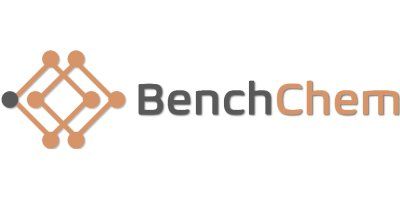

BenchChem - Model B1678647 - Novel Small Molecule
Nevadensin is a novel small molecule that has been studied for its potential therapeutic applications in medicine. It is a member of the polyphenol family and has a unique structure that makes it attractive for use in various medical applications. It has been studied for its potential anti-cancer, anti-inflammatory, anti-allergic, and other therapeutic effects.
Bioactivity and Pharmacological Potential
Nevadensin has been recognized as a promising natural bioactive substance with the potential to serve as a novel "natural lead" in drug discovery programs. It has exhibited a broad spectrum of significant biological activities, such as hypotensive, anti-tubercular, antimicrobial, anti-inflammatory, anti-tumor, and anti-cancer activities. The comprehensive review of nevadensin`s natural sources, isolation, chemistry, and biological activities aims to encourage ongoing research in pharmaceutically potential natural "lead molecules" in drug discovery initiatives (Brahmachari, 2010).
Metabolic Profiling
The metabolism of nevadensin has been studied both in vitro and in vivo, revealing that its major metabolic pathways include oxidation, hydrolysis, demethylation, methylation, sulfate conjugation, and glucuronide conjugation. These findings provide valuable insights and evidence for further investigations into the metabolic mechanisms of nevadensin (Liang et al., 2018).
Interaction with Proteins
Studies on nevadensin`s binding to human serum albumin (HSA) have revealed that the interaction mainly involves hydrophobic forces, and nevadensin binds to HSA with high affinity due to the presence of methoxy groups in its aromatic rings. The binding does not significantly alter the molecular conformation of HSA, indicating a stable interaction (Li et al., 2007).
Allergy and Anaphylaxis Mitigation
Nevadensin has shown potential in alleviating food hypersensitivity and passive cutaneous anaphylaxis in mice. It reduces the expression of c-Kit receptors, leading to suppression of allergic responses, inhibition of histamine release, and acceleration of apoptosis in bone marrow-derived mast cells (Zhang et al., 2020).
Topoisomerase Inhibition and Apoptosis Induction
Nevadensin has been identified as a topoisomerase (TOPO) poison, specifically inhibiting TOPO I in human colon carcinoma HT29 cells. It triggers DNA damage and apoptosis, inducing cell cycle disruption and activating the intrinsic apoptotic pathway via caspase activation. These findings highlight its potential role in cancer treatment by affecting cell cycle regulation and promoting cell death (Müller et al., 2021).
Molecular Structure and Docking Studies
Nevadensin`s molecular structure, vibrational frequencies, and electronic properties have been analyzed, revealing its potential in drug discovery. It exhibits antimicrobial activities against various bacteria and fungal pathogens, emphasizing its pharmacological importance. Molecular docking studies have provided insights into itsinteraction mechanisms and binding affinities with different biological targets (Kumar et al., 2020).
Anti-tumor and Anti-carcinoma Potentials
Nevadensin has demonstrated anti-tumor and anti-carcinoma potentials, especially against human oral squamous cell carcinoma. Its cytotoxic effects have been observed in various cell lines, with significant antioxidant activities contributing to its therapeutic effects. Molecular docking methods have been employed to compare its biological activities against enzymes, offering valuable insights into its mechanism of action and its potential as a therapeutic agent (Lan et al., 2021).
Interaction with Bovine Serum Albumin
Nevadensin`s binding to bovine serum albumin (BSA) has been investigated, revealing a strong quenching effect on BSA`s intrinsic fluorescence, mainly through a static quenching process. This interaction provides insights into the pharmacokinetics and pharmacodynamics of nevadensin, suggesting potential therapeutic applications (Yu et al., 2008).
AI-Powered Synthesis Planning: Our tool employs the Template_relevance Pistachio, Template_relevance Bkms_metabolic, Template_relevance Pistachio_ringbreaker, Template_relevance Reaxys, Template_relevance Reaxys_biocatalysis model, leveraging a vast database of chemical reactions to predict feasible synthetic routes.
One-Step Synthesis Focus: Specifically designed for one-step synthesis, it provides concise and direct routes for your target compounds, streamlining the synthesis process.
Accurate Predictions: Utilizing the extensive PISTACHIO, BKMS_METABOLIC, PISTACHIO_RINGBREAKER, REAXYS, REAXYS_BIOCATALYSIS database, our tool offers high-accuracy predictions, reflecting the latest in chemical research and data.
- Precursor scoring : Relevance Heuristic
- Min. plausibility : 0.01
- Model : Template_relevance
- Template Set : Pistachio/Bkms_metabolic/Pistachio_ringbreaker/Reaxys/Reaxys_biocatalysis
- Top-N result to add to graph : 6
